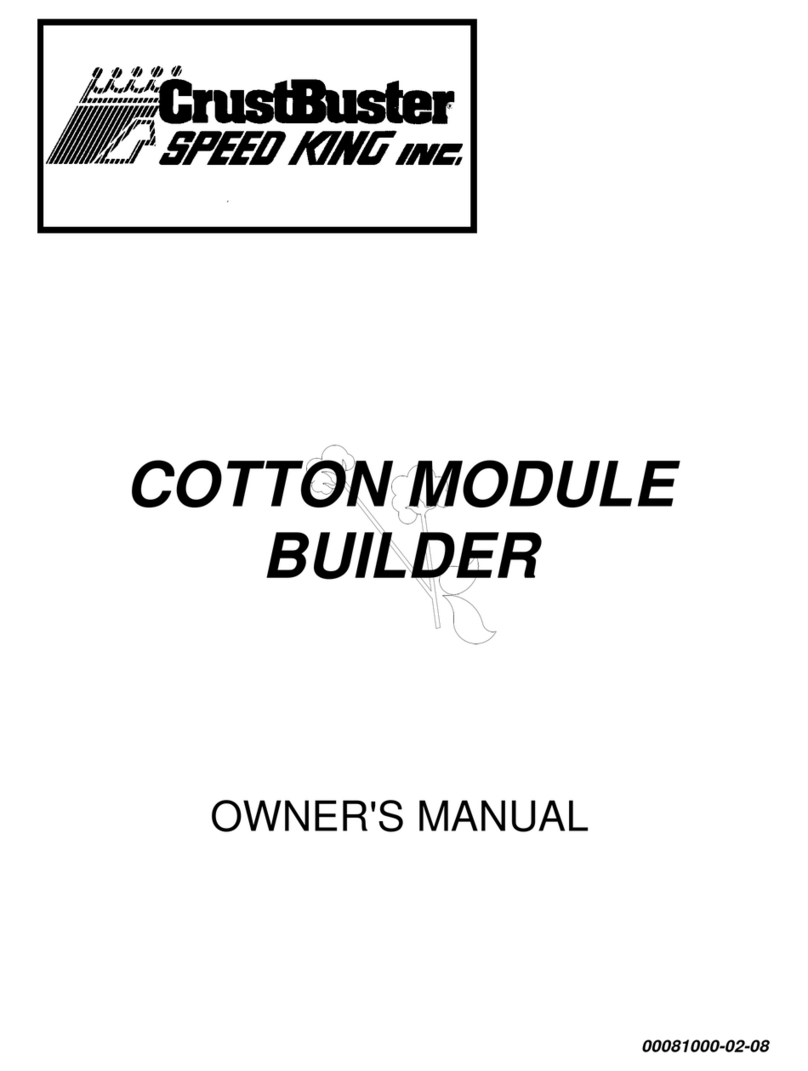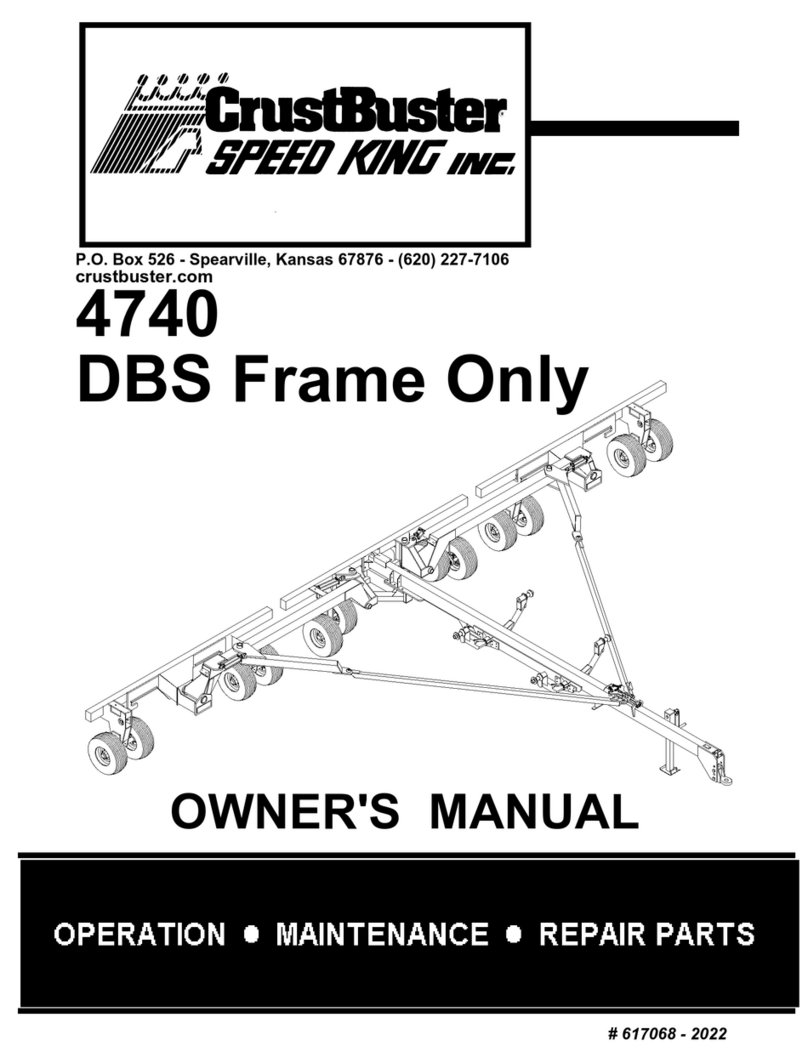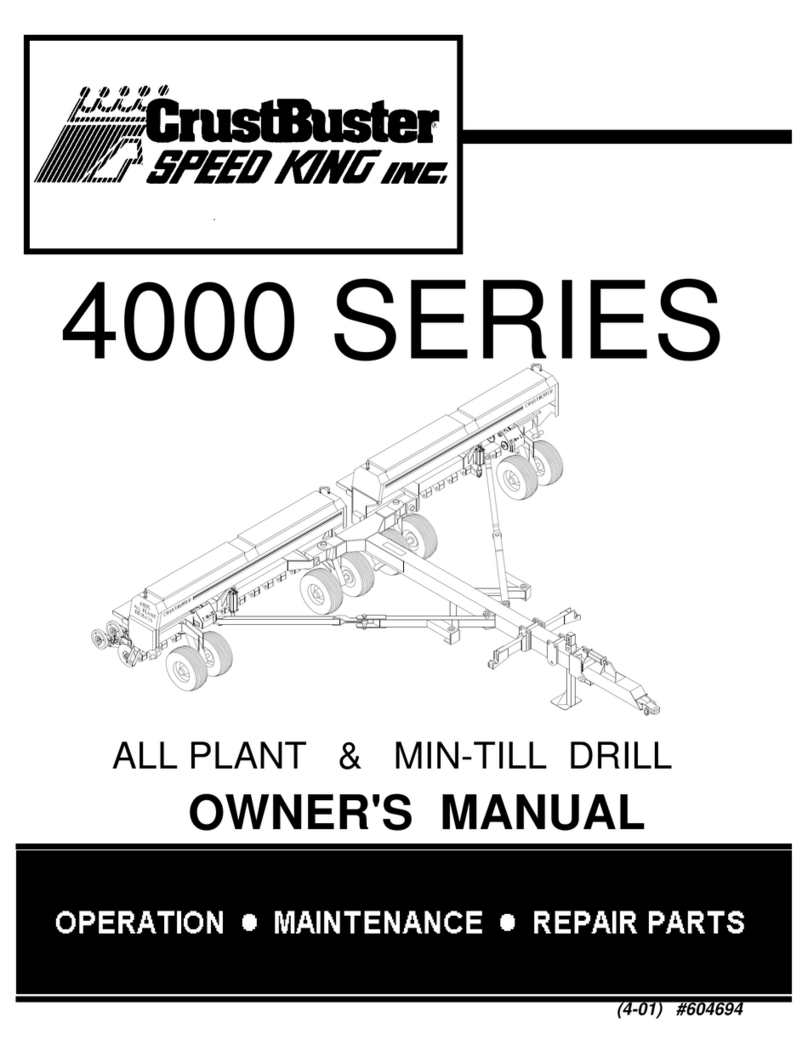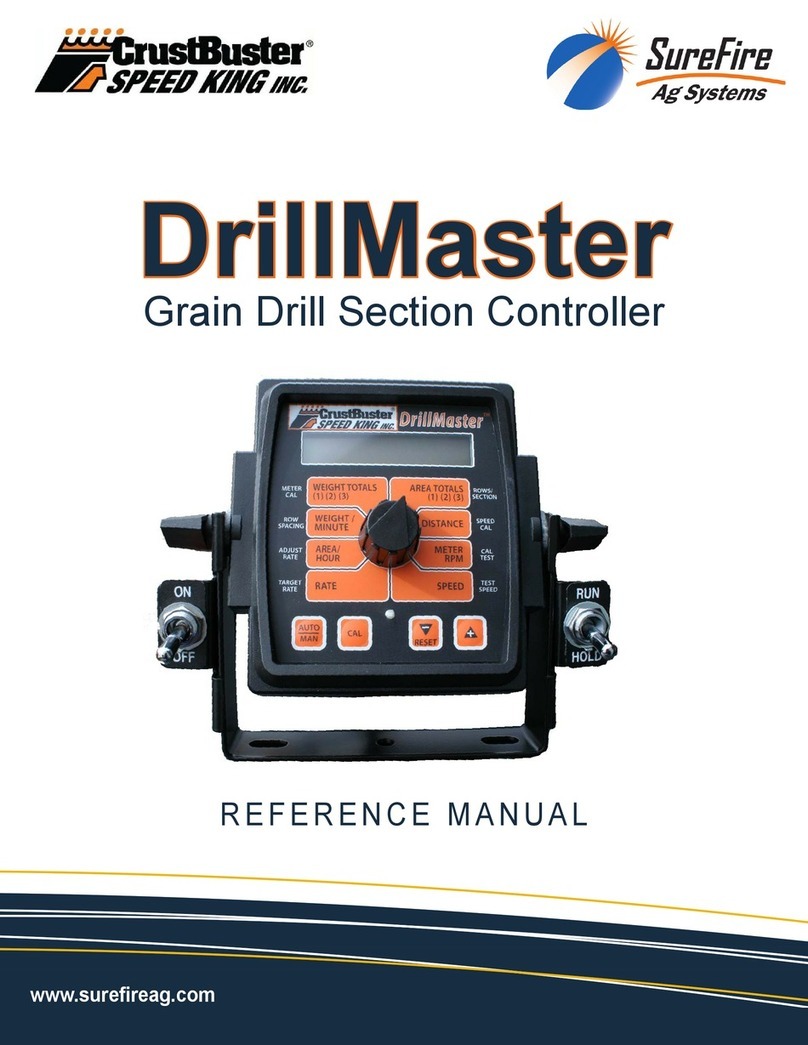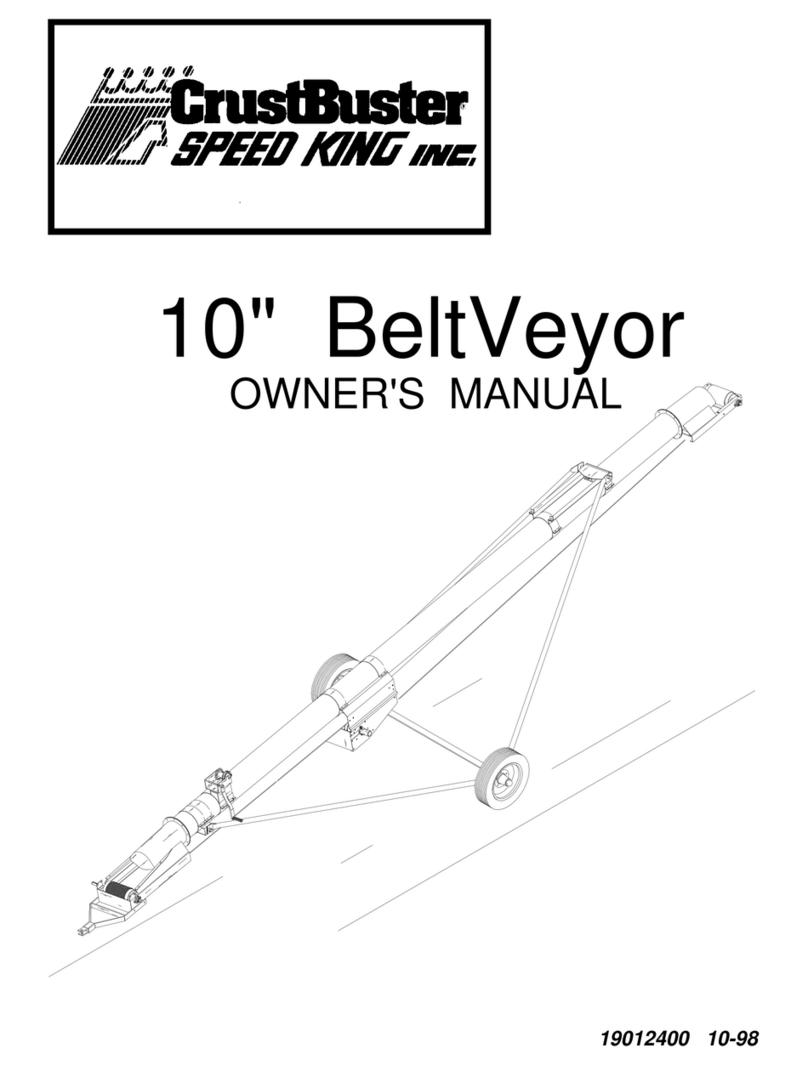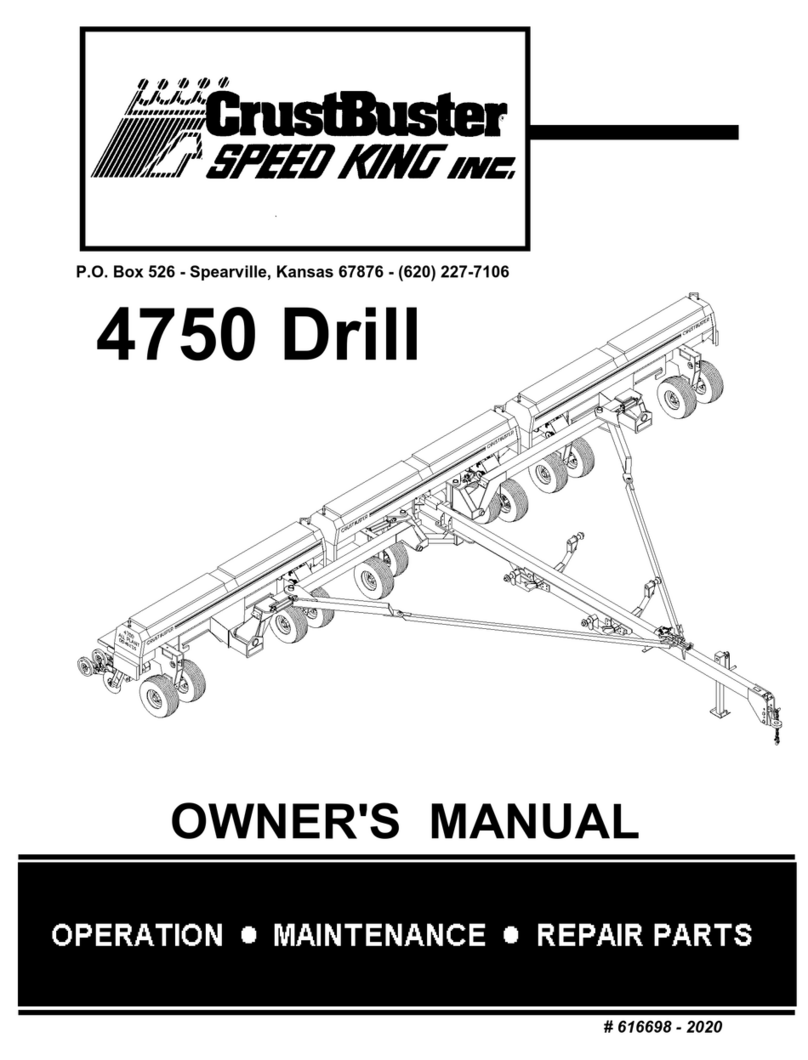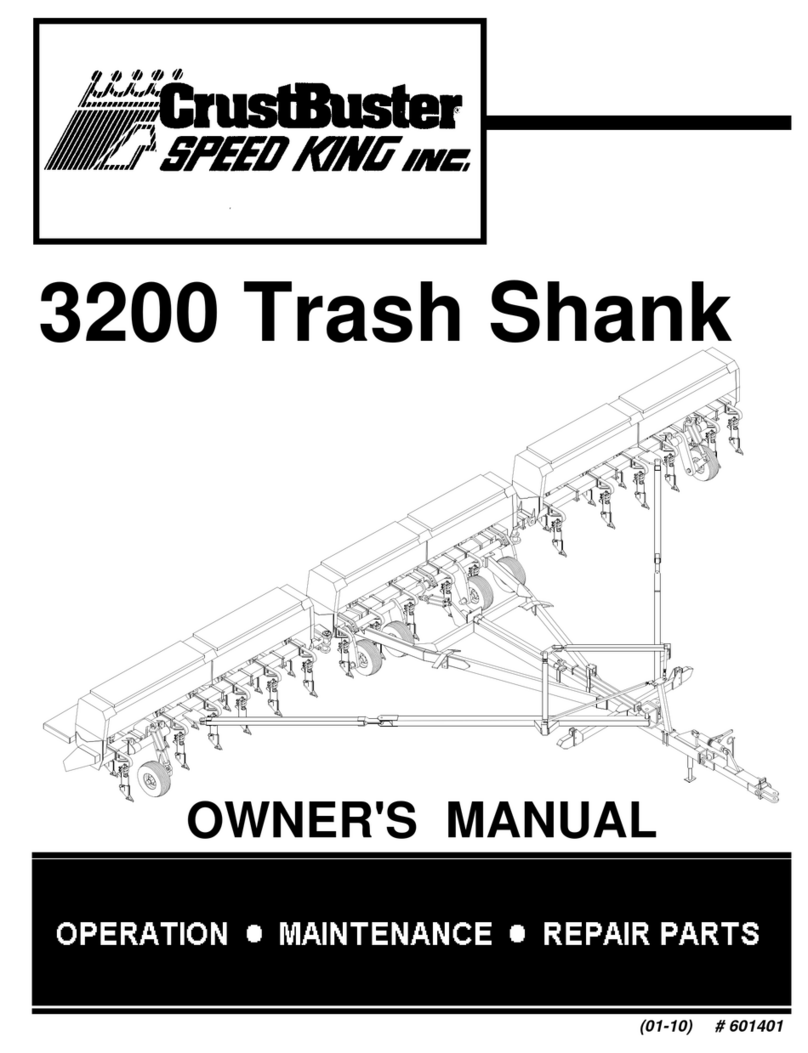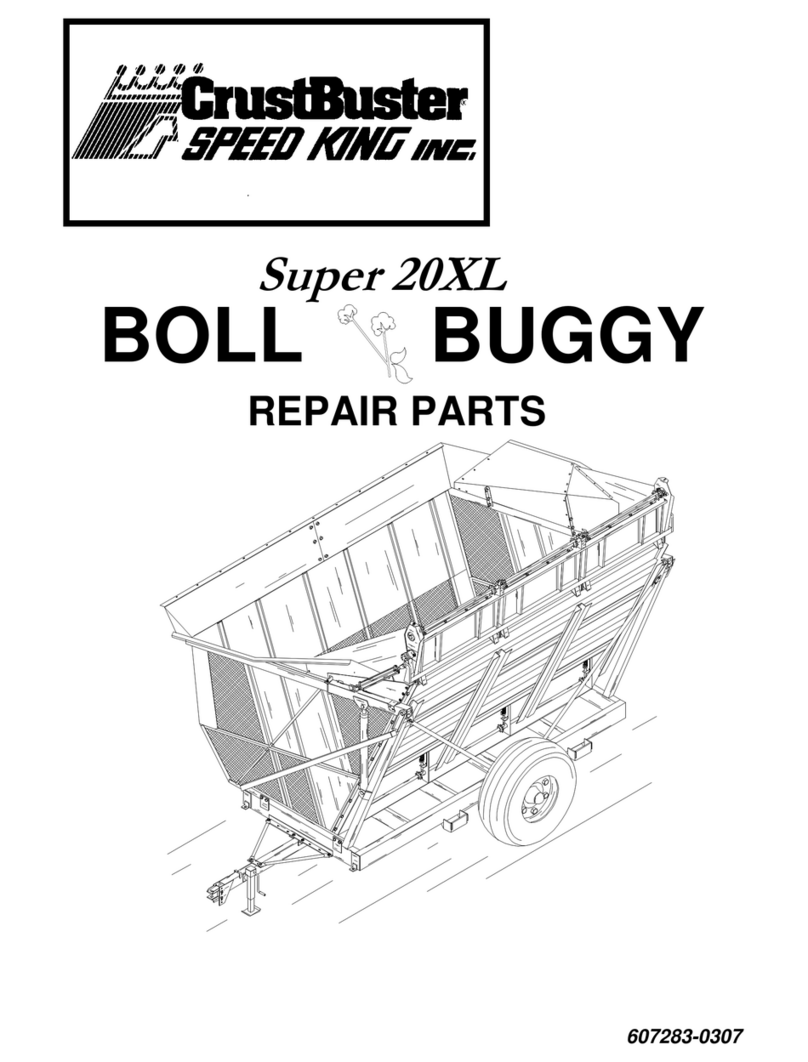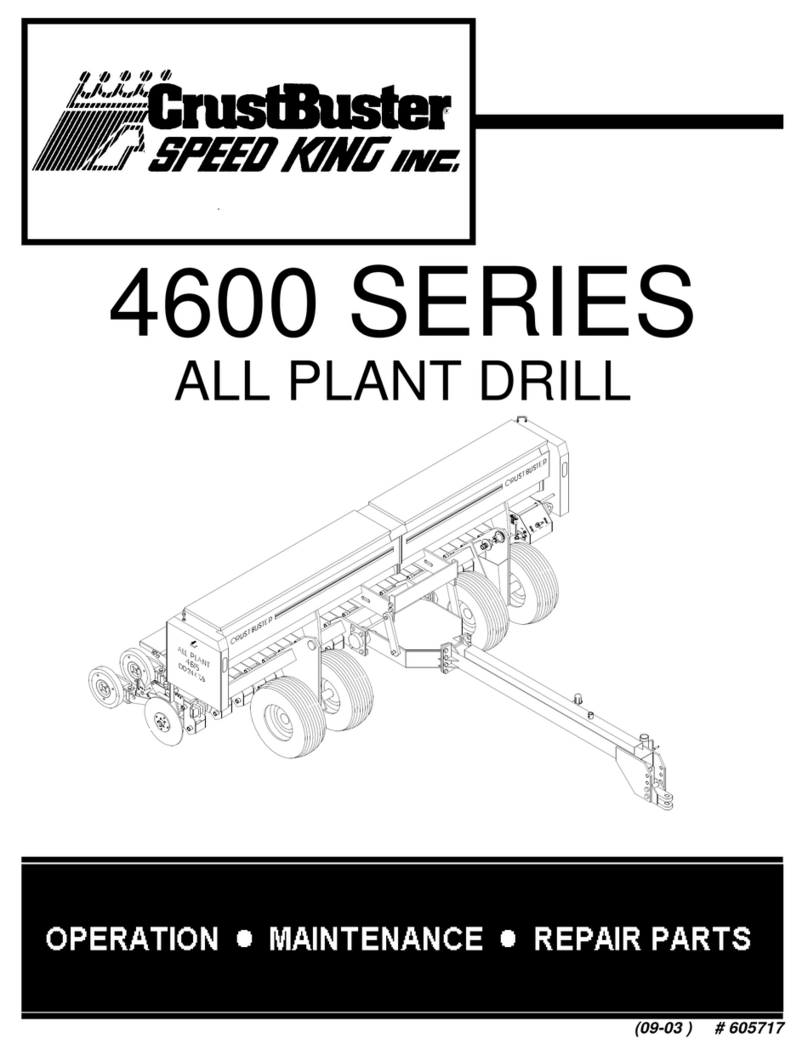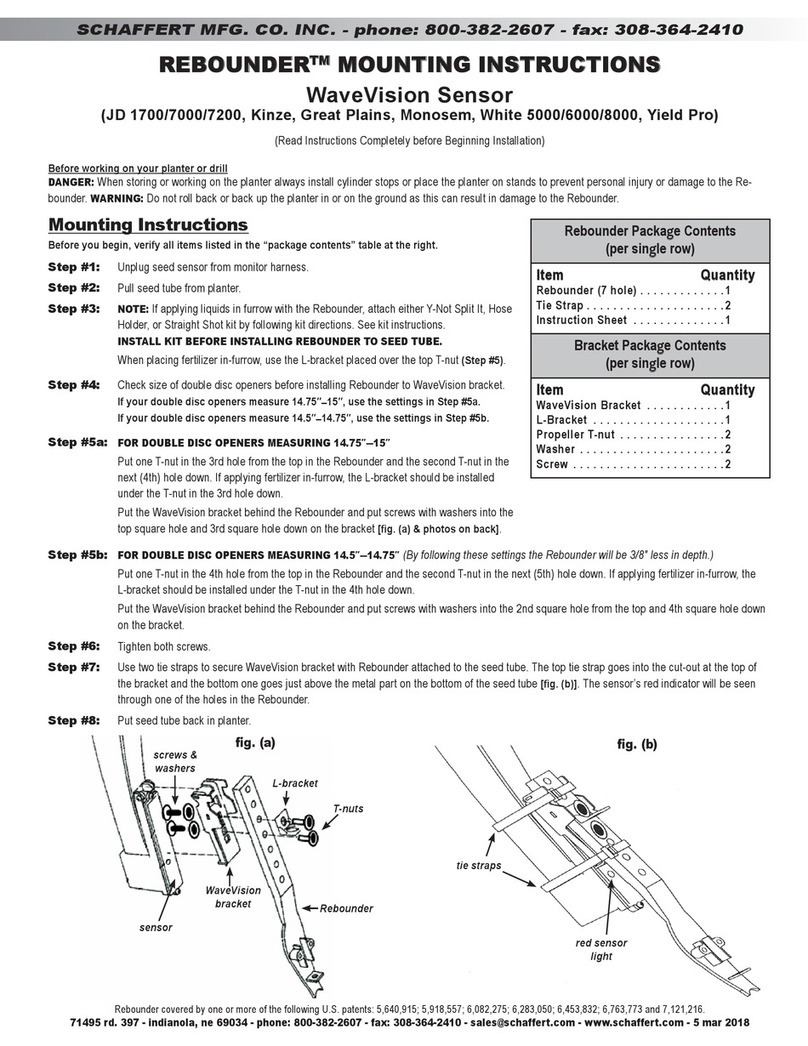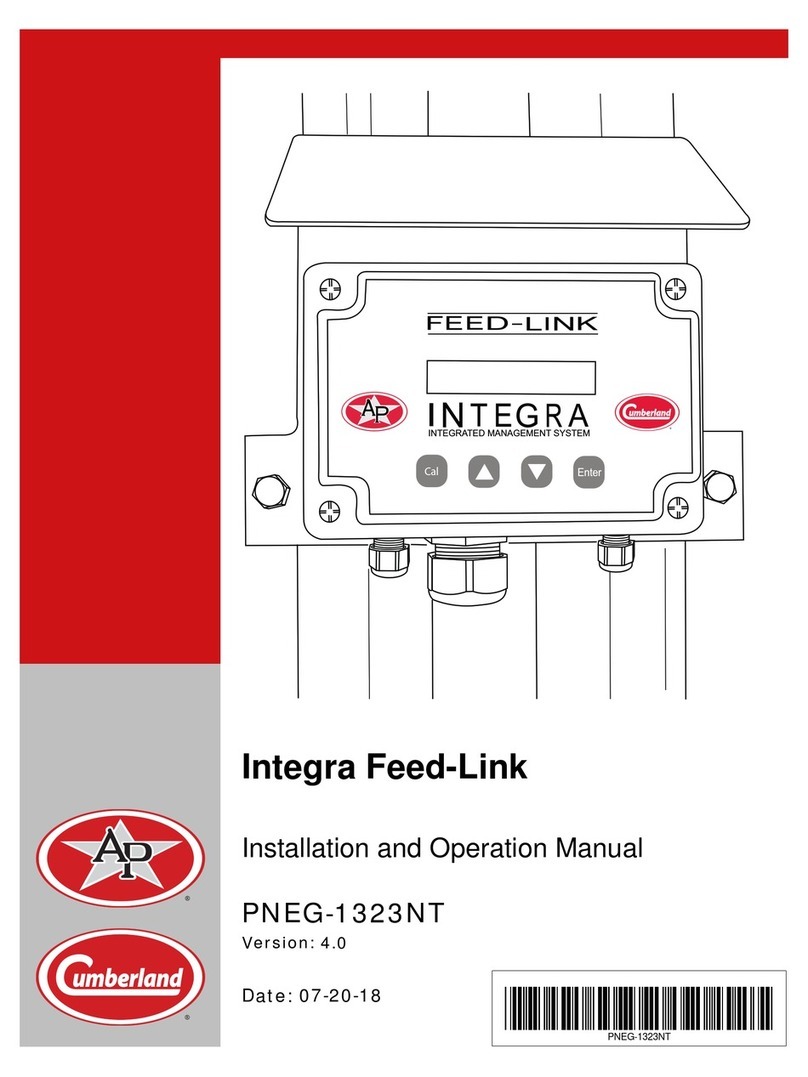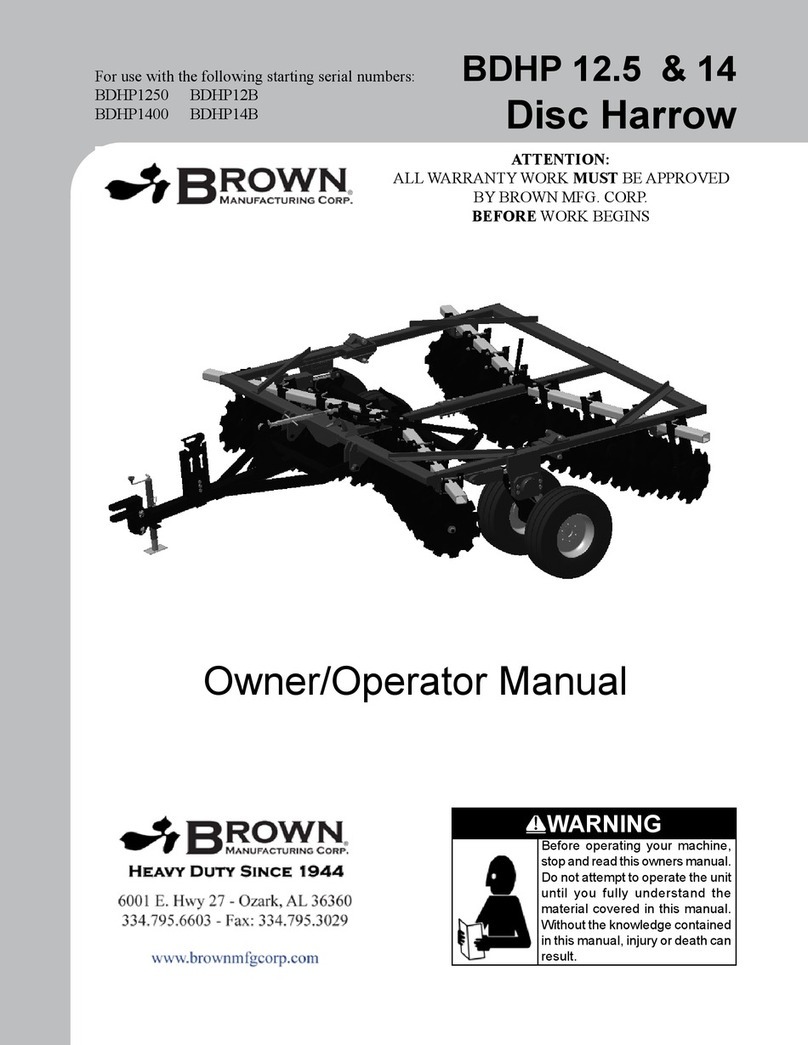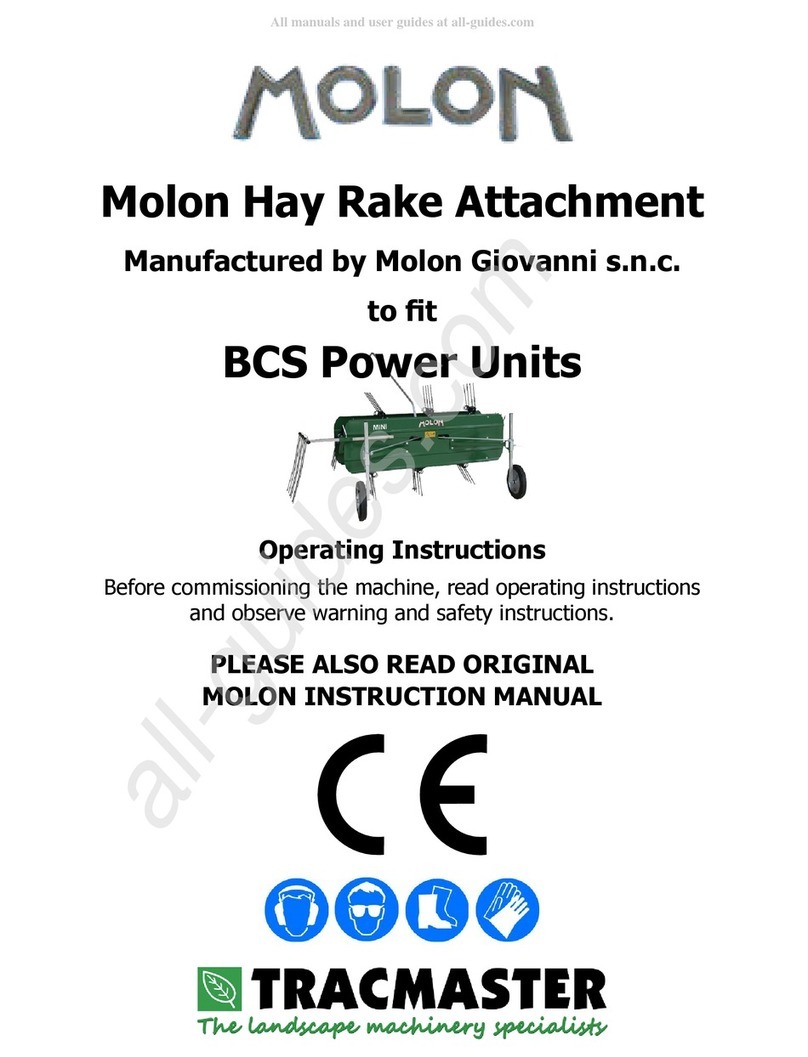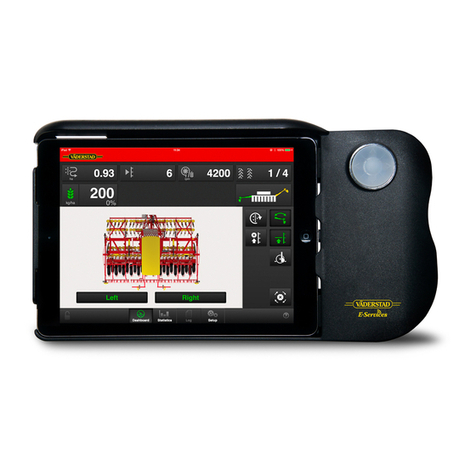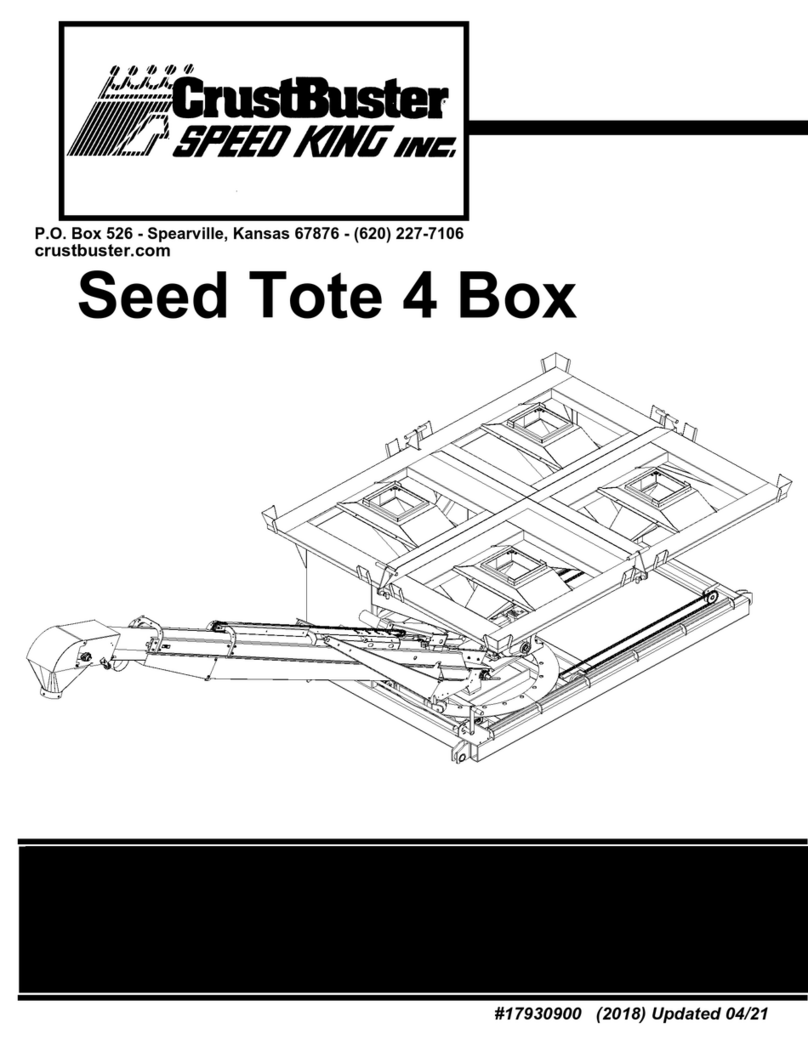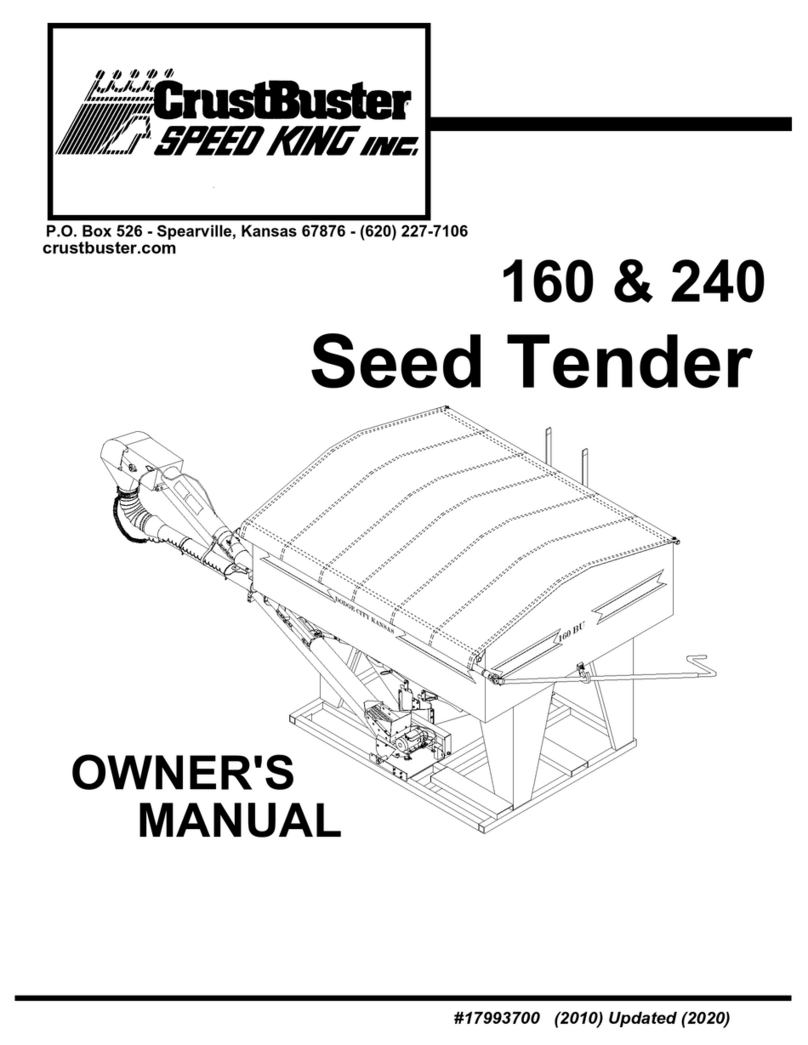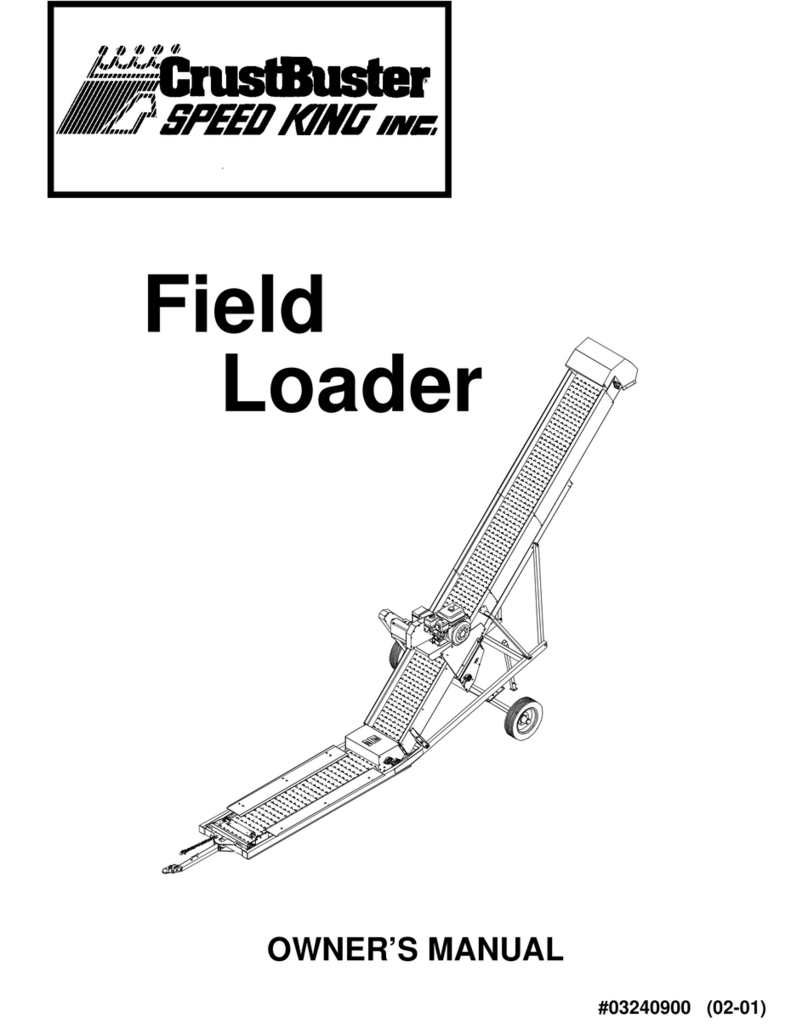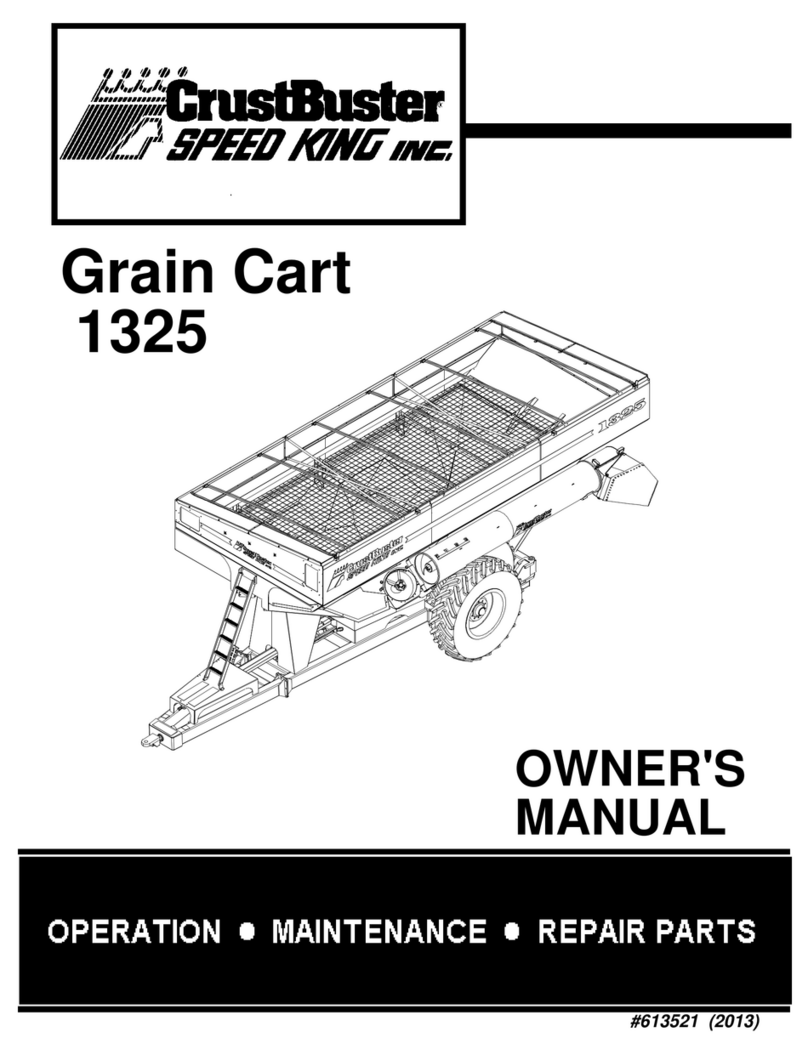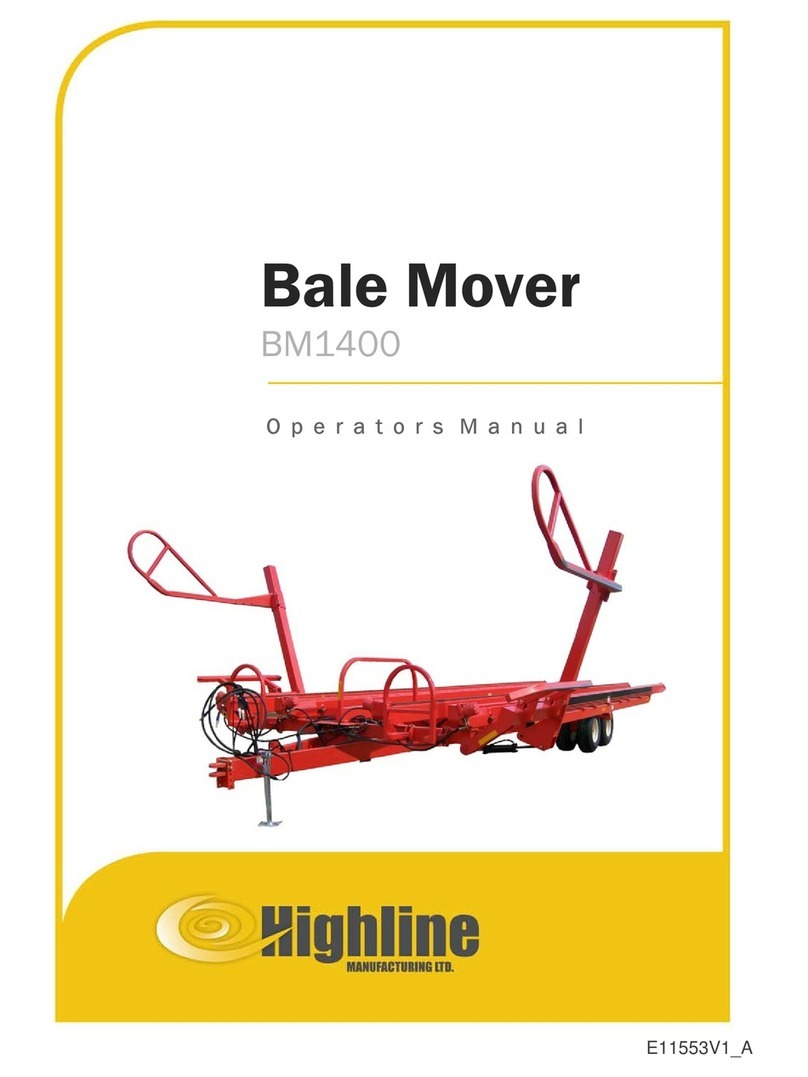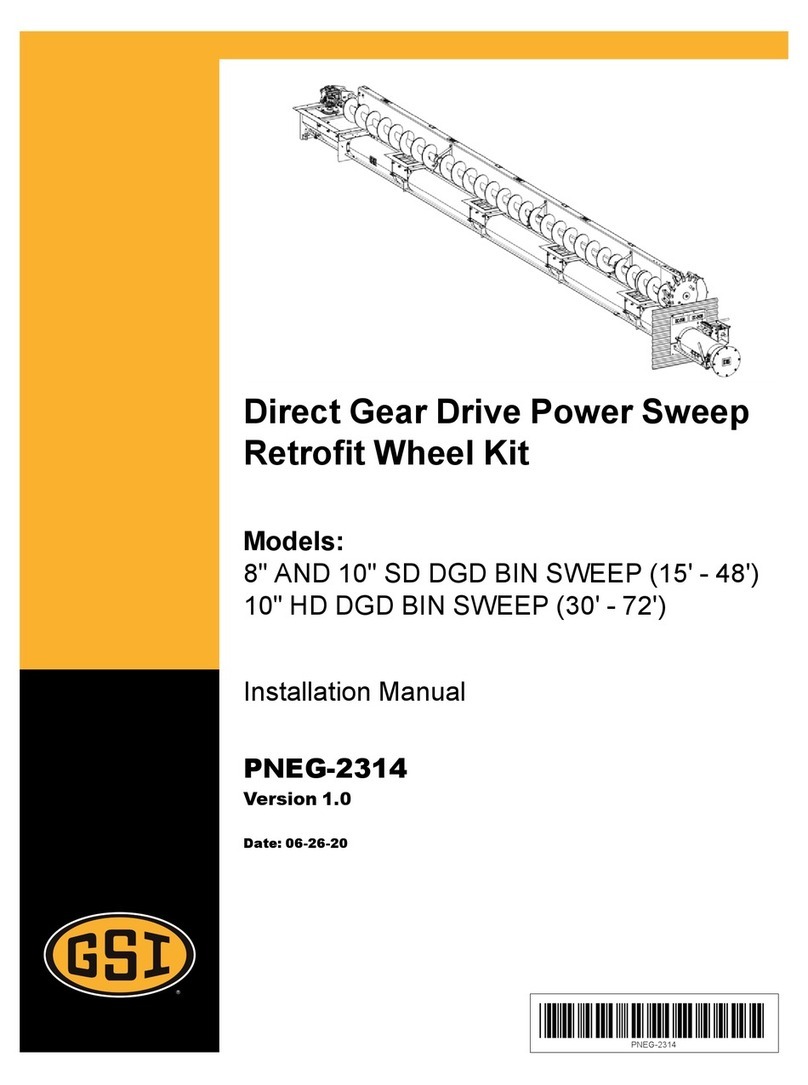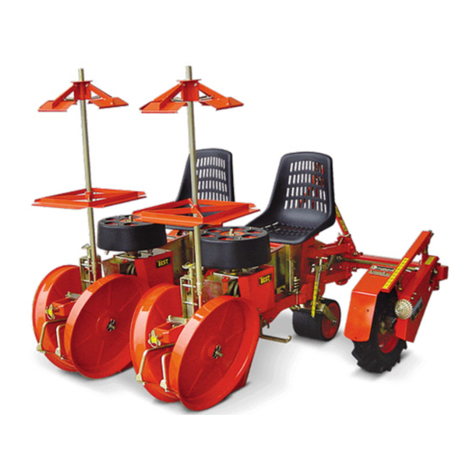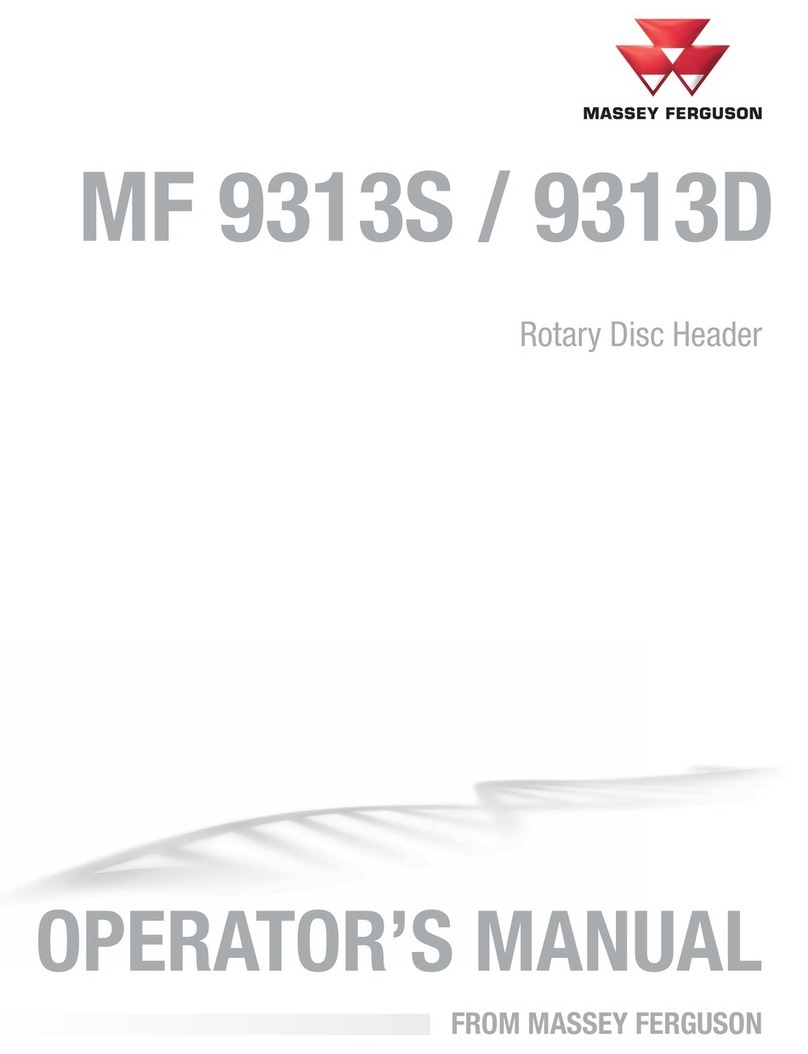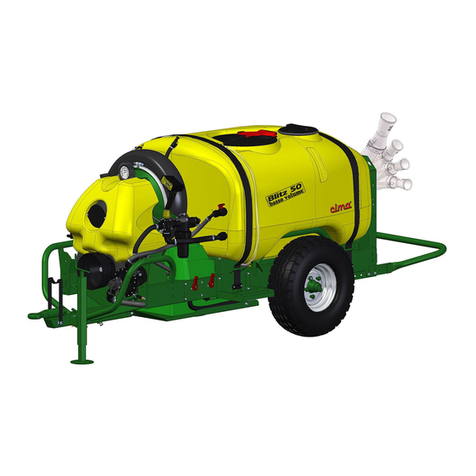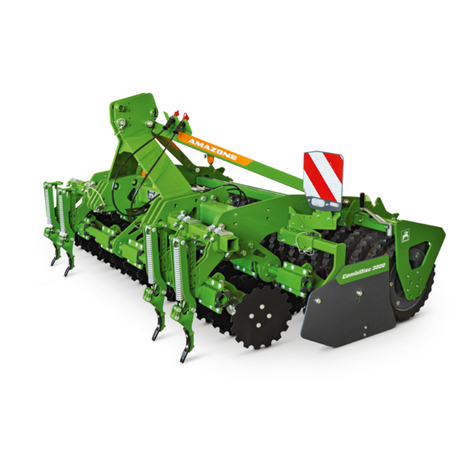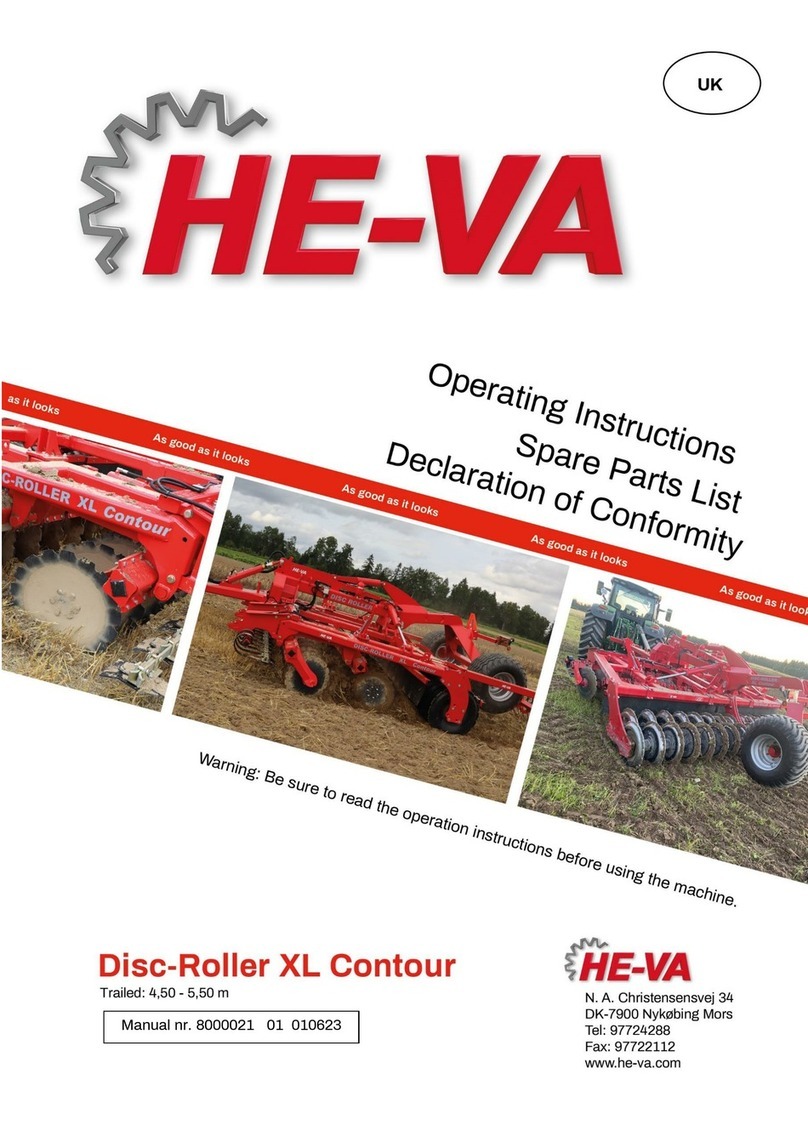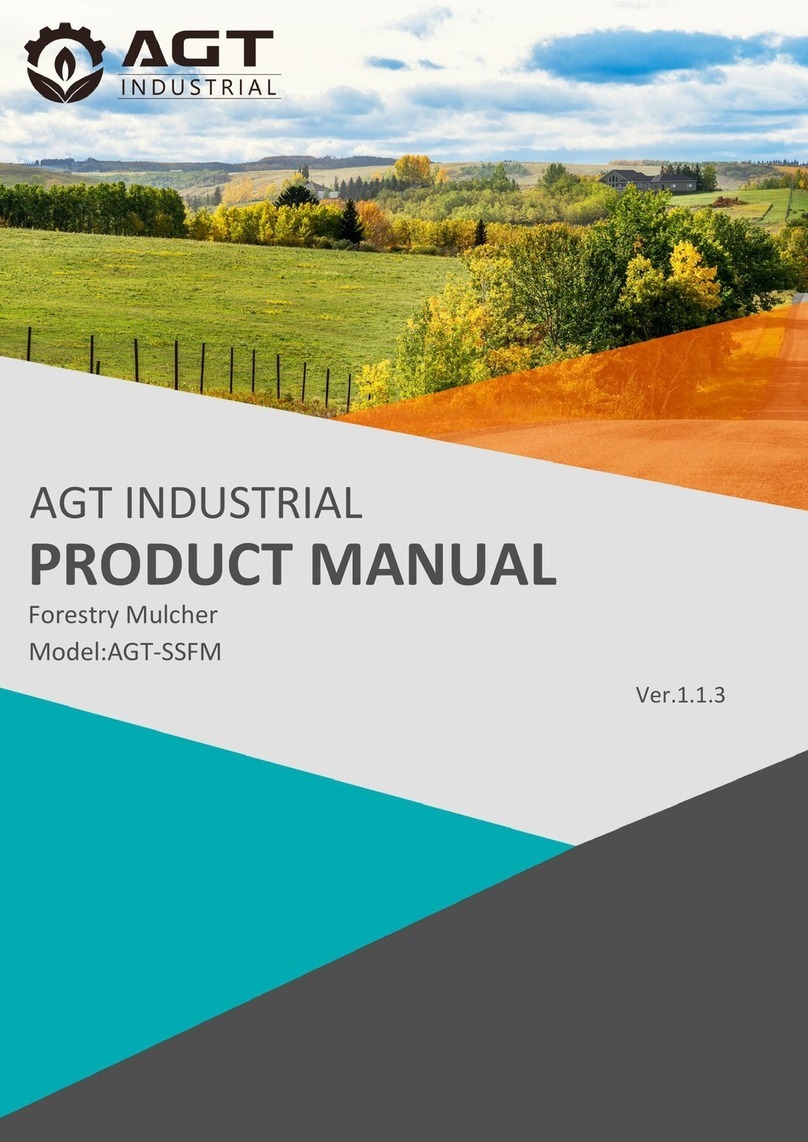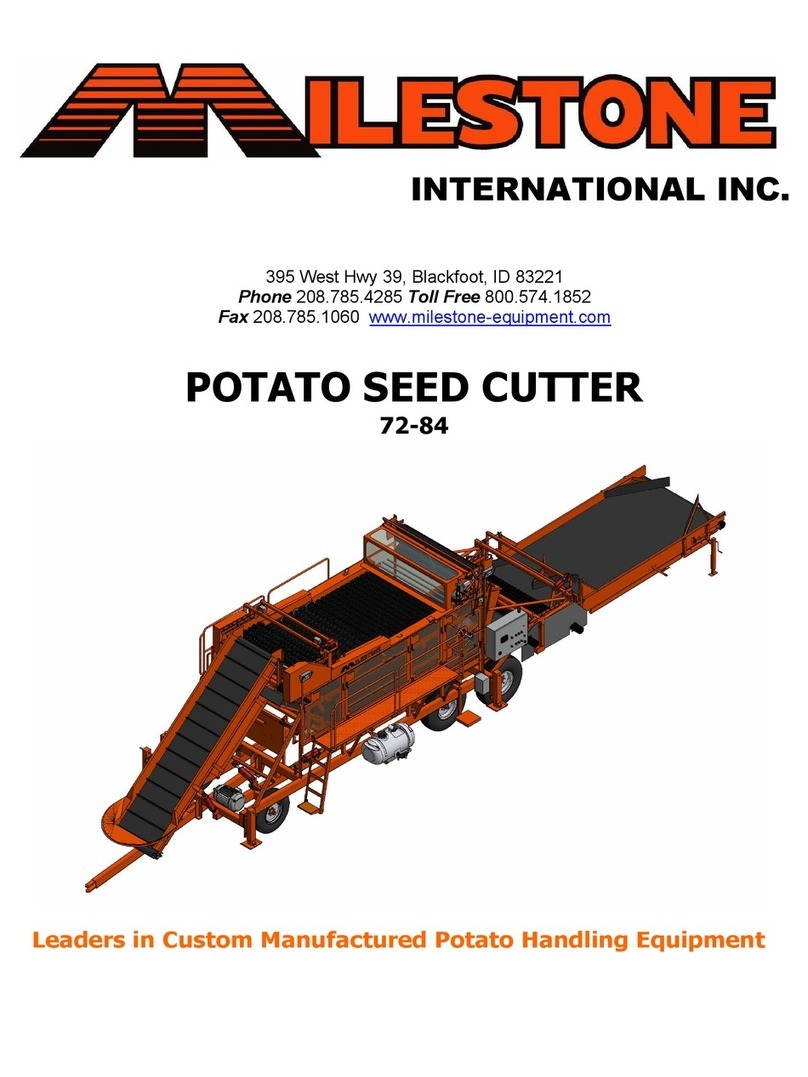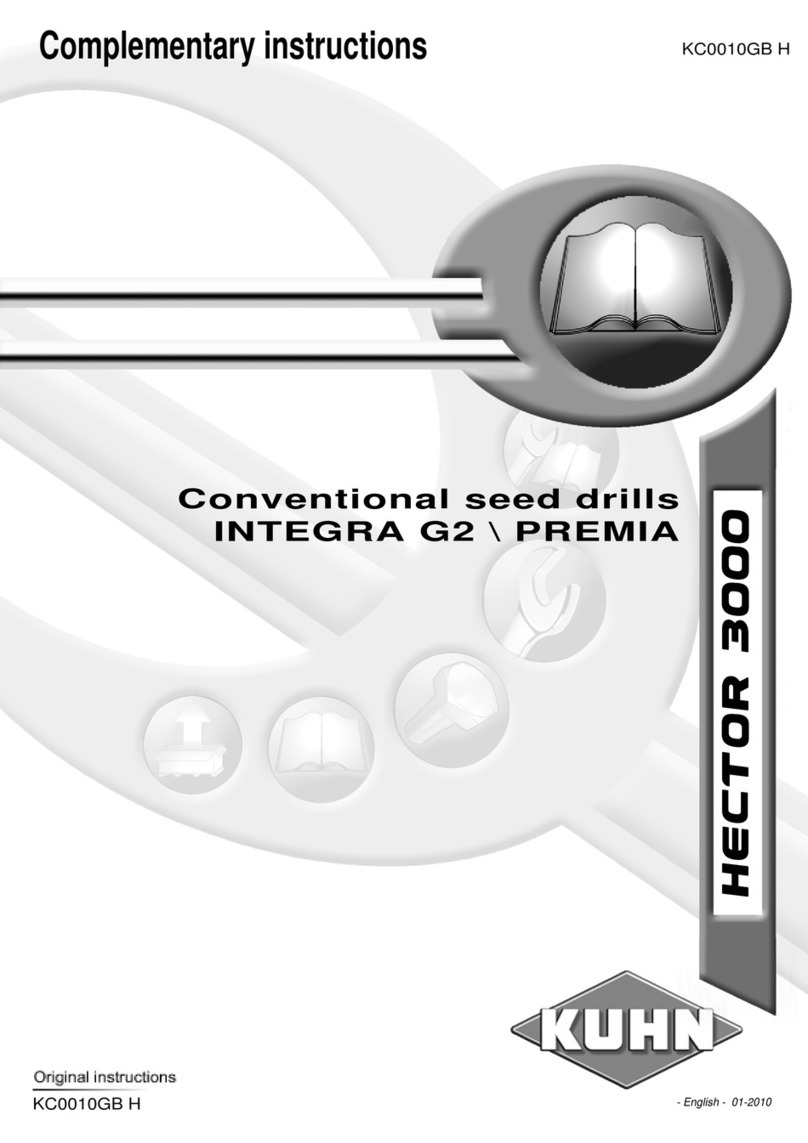
Calibration and Seed Rates
Calibration/Drilling Rates
Planting the right rate can be frustrating.
Sometimes the end result is not what the rate
chart indicates. Seeding rate is affected by
seed size, seed treatments, foreign material,
test weight, and tire air pressure.
1. Always plant clean seed.
2. Check tire air pressure.
3. Seed treatments vary by type and time of
application.
Some seeds are treated at the processor. Drill
box treatments are common methods of
application. Each of these can "gum" up the
wobble slot cup halves and reduce final
seeding rate. Treated seed often flows
differently than non-treated seed.
A general method for checking quantities drilled
is as follows:
1. Set drill for desired seeding rate.
2. Fill the box level; then pull drill for a short
distance to settle seed. Refill box exactly
level full.
3. Drill a calculated one acre.
4. Carefully weigh the seed required to refill
the box level full.
5. Compare the amount used versus that
stated on the rate chart.
6. Adjust seeding rate by changing the
sprocket combination or wobble slot width.
A stationary rate check can be made by
manually turning the drive wheel. To complete
this procedure:
1. Set drill for desired seeding rate.
2. Place a sufficient amount of seed in box to
complete test. Raise drill.
3. Place a tarp or other material under opener
seed drop to catch seed.
4. Turn drive wheel the required number of
times to plant one-tenth acre. (See chart
below).
Drill Width Turns of
Drive Wheel
7' 108
10' 76
15' 51
5. Collect seed from tarp and carefully weigh
it.
6. This weight times ten is the calculated seed
rate per acre.
7. If this is not the desired seeding rate adjust
by changing sprocket combination or
wobble slot width.
8. Repeat rate check.
Another method involves catching seed from
one or more seed cups and utilizing a density
scale to determine actual rates. These scales
are commercially available, inexpensive and
very easy to use. Information can be obtained
from CrustBuster®/Speed King, Inc.
Drive Wheel
The spring loaded drive wheel should not
require any adjustment. Make sure frame
height is low enough to cause drive wheel
spring to compress enough to stay firmly in
contact with ground.
Scraper Blade Replacement
Opener blade inside scrapers are spring loaded
and require no adjustment. To replace the
scraper blades, remove rear lock nut and slide
both blades from stem. Assemble with new
blades and replace onto stem being careful not
to overtighten lock nut.
NOTE: Do not over tighten lock nut. Be
sure scapers move freely. Failure to
do so will result in damage to
scrapers and proper operation of
scrapers.
11




















